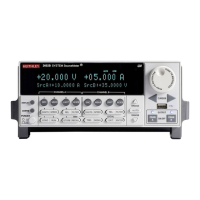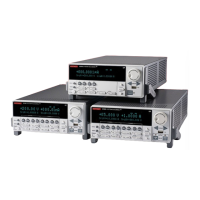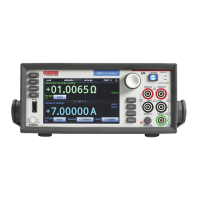Series 2600 System SourceMeters Reference Manual TSP Programming Fundamentals 2-45
Return to Section 2 topics 2600S-901-01 Rev. A / May 2006
Running a named script
Any named script that is in the run-time environment can be run using one of the
following commands. Both commands perform the same operation.
myscript()
myscript.run()
where: myscript is the user-defined name of the script.
Example:
Assume a script named “test3” has been loaded into the run-time environment.
The following command executes the chunk of the script.
test3()
Running scripts automatically
Scripts can be set to run automatically when the Series 2600 is turned on. One or
more scripts can be set to autorun, and one script can be set to autoexec.
Autorun scripts
When a saved script is set to autorun, it will automatically load and run when the
Series 2600 is turned on. Any number of scripts can be set for autorun. The run
order for these scripts is arbitrary, so make sure the run order is not important.
To set a script for autorun, set the following autorun attribute to “yes.” Setting it to
“no” disables autorun.
myscript.autorun
where: myscript is the user-defined name of the script.
Make sure to save the script in non-volatile memory after setting the autorun
attribute.
Example:
Assume a script named “test5” is in the run-time environment. The script can be
set to autorun as follows:
test5.autorun = "yes"
test5.save()
The next time the Series 2600 is turned on, the “test5” script will automatically
load and run.
NOTE The loadandrunscript name command sets the
autorun attribute for that script to “yes.” To cancel
autorun, set the autorun attribute to “no” and save
the script.

